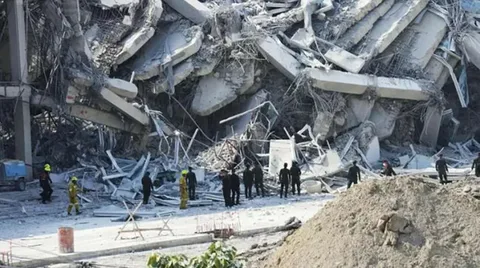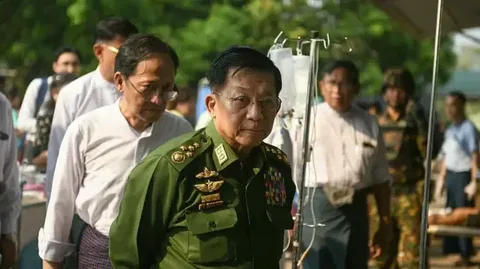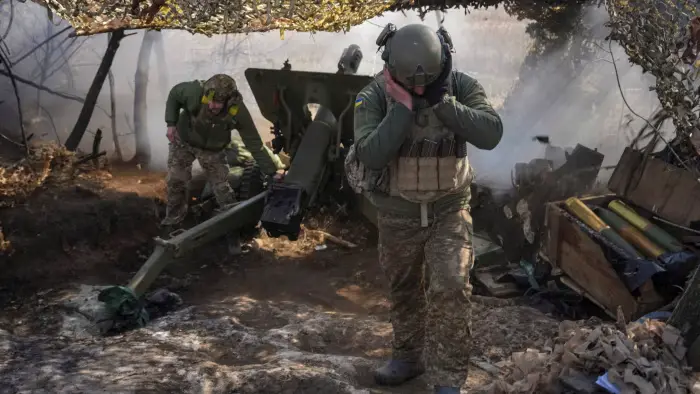Myanmar Earthquake Puts Junta’s Control to the Test

On March 28, 2025 a powerful 7.7-magnitude earthquake struck central Myanmar, causing widespread destruction and loss of life.
The disaster has put the military junta’s leadership under severe pressure. Their ability to manage a national crisis is being tested and their response has raised concerns among citizens and the global community. This Myanmar earthquake puts the junta’s control to the ultimate test, as they struggle to provide effective relief.
Table of Contents
Magnitude, Location and Impact
Earthquake’s epicenter was near Mandalay, Myanmar’s second-largest city. The tremors were felt in neighboring countries, including Thailand and China.
The impact was devastating, with thousands of buildings reduced to rubble and entire communities left in ruins. This Myanmar earthquake puts the nation in a state of emergency, requiring urgent assistance.
Key Impacts of the Earthquake
| Impact Area | Details |
|---|---|
| Casualties | Over 2,700 confirmed deaths, with estimates possibly exceeding 10,000 |
| Injuries | More than 4,500 reported injuries |
| Missing Persons | Around 450 individuals unaccounted for |
| Infrastructure | Government offices, homes, and religious sites severely damaged |
| Displacement | Tens of thousands left homeless |
Government and Military Response

The ruling military junta, led by General Min Aung Hlaing, declared a state of emergency and requested international assistance. However, their slow response and lack of coordination have drawn criticism. Many believe the junta is prioritizing its own control over providing immediate relief.
Reports also suggest that military operations against opposition groups have continued, despite the urgent need for disaster management. The way this Myanmar earthquake puts pressure on the military could reshape political dynamics in the country.
Public Reaction and Crisis Management
The earthquake has intensified public frustration with the junta.
- Volunteer Efforts: Civilians and local organizations have stepped up to provide food, water, and shelter where the government has failed.
- Rising Anti-Junta Sentiments: Many accuse the military of neglecting the crisis, leading to increased anger and calls for change.
- Communication Challenges: Power outages and damaged communication networks have slowed rescue and relief efforts.
International Aid and Support Efforts
Several countries and organizations have pledged support. However the junta’s control over aid distribution has raised concerns about transparency and accessibility.
International Aid Efforts
| Country/Organization | Type of Aid Provided |
|---|---|
| United Nations | Urged faster aid delivery before monsoon season |
| China & Russia | Offered financial aid and reconstruction support |
| ASEAN Nations | Provided emergency supplies and medical assistance |
| Western Countries | Expressed willingness to help but remain cautious due to political issues |
The effectiveness of this aid depends on whether the junta allows unrestricted access to affected areas.
How the Earthquake Challenges the Junta’s Authority
The disaster has exposed significant weaknesses in the junta’s leadership.
- Eroding Public Trust: Delays and inefficiencies in disaster response have fueled public anger.
- International Scrutiny: Global attention is on how the junta handles the crisis which may affect diplomatic relations.
- Operational Strain: The military’s focus on suppressing opposition groups has left limited resources for disaster management.
Future Implications for Myanmar’s Stability
The earthquake may have lasting effects on Myanmar’s political and social landscape.
- Strengthening Opposition: Civilian led relief efforts could boost resistance movements.
- Economic Strain: The destruction has worsened economic hardships increasing poverty and social unrest.
- International Relations: The junta’s response to aid offers may influence Myanmar diplomatic future.
Conclusion
Myanmar earthquake puts the country’s leadership to the ultimate test. It has not only caused immense suffering but also exposed critical flaws in the military junta’s governance.
The coming weeks will determine whether the leadership can manage the crisis effectively or face growing opposition and international isolation. The people of Myanmar are watching closely hoping for real action in this time of need.






